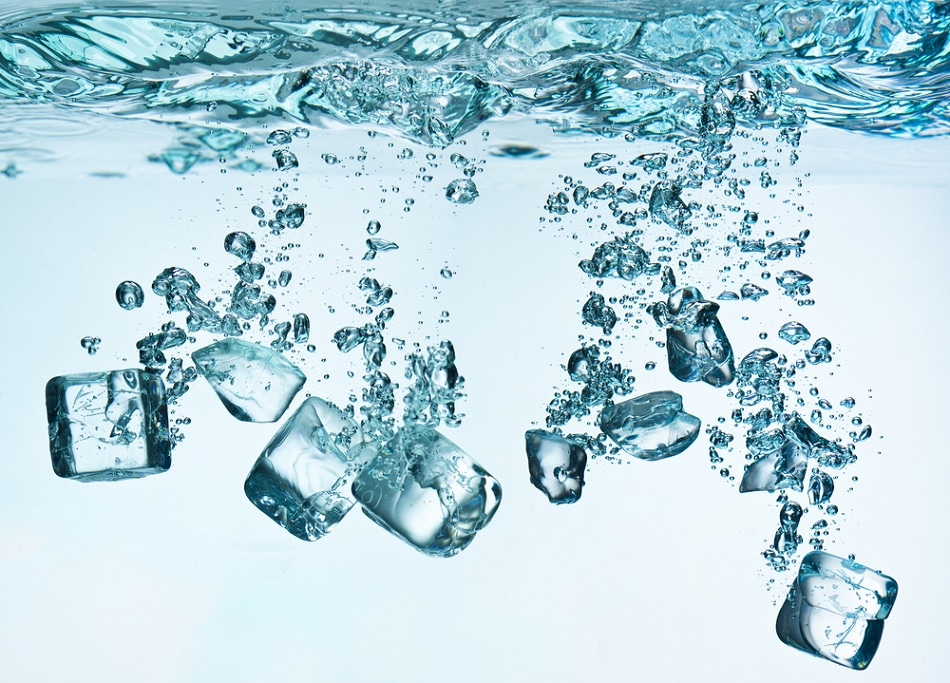Dec 8 2016
 Tischenko Irina/Shutterstock.com
Tischenko Irina/Shutterstock.com
Water is vital to life on Earth, and it's importance cannot be overstated. However, from a scientific point of view, there is more to be known about water and its various solid phases. These phases exhibit a plethora of unusual properties and so-called anomalies which, while being the main reason for the biological and chemical importance of water, are often viewed as controversial.
Researchers from Oxford University and University College London were fascinated by such properties of water, and this motivated them to seek a better understanding of water and ice as materials, which has a far-flung effect on various areas of research. They have reported their research on the hydrogen ordering in the disordered ice VI phase with respect to its ordered counterpart ice XV in an article published in The Journal of Chemical Physics, from AIP Publishing.
Whenever liquid water freezes, only its oxygen atoms actually end up in fixed positions. The hydrogen atoms remain disordered - so we call such phases of ice ‘hydrogen disordered’. Upon cooling, the hydrogen atoms are expected to become ordered and result in hydrogen-ordered ices. Yet, this process is difficult because the reorientations of the hydrogen-bonded water molecules are highly cooperative.
Christoph G. Salzmann, Associate Professor, University College London
As an analogy, he used a tile game to explain the concept.
“Moving from disorder to order is difficult work because the tiles can’t move independently—similar to the situation in ice,” he said. “But, a few years ago, we found that adding a small amount of hydrochloric acid dramatically helps achieve hydrogen order at low temperatures.”
The “magic ingredient” that accelerates the reorientations of the water molecules is hydrochloric acid.
Ice XV and ice VI are both high-pressure phases of ice formed at approximately 10,000 atmospheres.
The structure of ice XV has been the topic of lively scientific discussion for years. A variety of different and, in part, conflicting models have been suggested from both experimental data - including a previous study by our group - as well as computational studies.
Christoph G. Salzmann, Associate Professor, University College London
For the purpose of this study, the researchers utilized neutron diffraction to investigate the structure of ice XV and how it is formed from ice VI. “Using neutrons is important because X-rays are essentially ‘blind’ toward hydrogen atoms,” said Salzmann. “To fully solve the structure of ice XV, we really need to know where the hydrogen atoms are located—neutrons are essential.”
The team’s research represents a major change in the perception of ice XV, consolidating much of their earlier research. “First, we’ve shown using neutron diffraction at the ISIS Science and Technology Facilities Council in the U.K. that the ice shrinks in two directions, but expands in the third during the transition from ice VI to XV,” explained Salzmann. “Using density functional theory calculations, we can show that only one particular structural model of ice XV is consistent with these changes.”
As a coincidence, this structure is the same that the team put forward as a result of their in-depth investigation of neutron data.
This agreement between experiment and calculations is great, in particular, because there have been conflicting views regarding ice XV. The overall volume of the ice increases during the phase transition, which finally explains why the transition is observed more readily at ambient pressure than at higher pressures - behavior that has puzzled us for a long time.
Christoph G. Salzmann, Associate Professor, University College London
Yet another important point described in their article is an innovative computer program known as “RandomIce,” which has generated the best structural representation of ice XV till date. “We’ve presented the preparation of the most ordered ice XV to date, but we haven’t achieved a completely ordered state,” Salzmann stated.
RandomIce can be applied to produce large-scale molecular models. Referred to as “supercells” by the team, the models are in accordance with the average structure acquired using the diffraction data. Most importantly, RandomIce is “playing” the tile game mentioned above until arriving at the best possible accordance with the diffraction data. “To do this, more than 100 million ‘tile moves’ were necessary,” specified Salzmann.
The team’s research has paved the way for the development of highly accurate computer models of water that can be applied in various fields, such as, biology, chemistry, geology and atmospheric sciences.
Moreover, there is a possibility now to “clarify in which form ice is expected to occur under certain pressure and temperature conditions inside icy moons and planets,” Salzmann stated.
So what would be the next course for the researchers?
There’s still an open question about why we can’t achieve full order in ice XV. We’ve already started new experimental work to explore how the properties of ice change within nanoconfinements and the presence of chemical species—because we’re interested in understanding the complex behavior of ice on comets and within our atmosphere.
Christoph G. Salzmann, Associate Professor, University College London